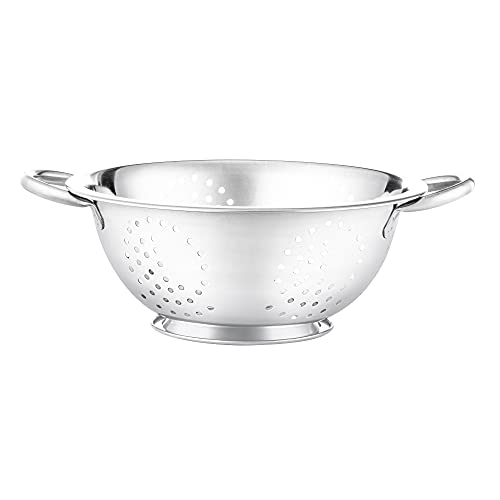What is a colander?
A colander is a kitchen tool designed to strain liquids from solids. It is commonly used to strain pasta, vegetables or to rinse fruits. A typical colander is usually made of metal, plastic or ceramic and has small holes or perforations all over its surface. Colanders come in different sizes, shapes and materials to fit different cooking needs.
Can a colander be used to strain yogurt?
Yes, a colander can be used to strain yogurt. Greek yogurt, for example, is made by straining regular yogurt in a colander for several hours to remove the liquid whey and concentrate the remaining solids. To strain yogurt in a colander, simply line the colander with cheesecloth or a fine-mesh sieve, pour the yogurt into the colander and let it drain for a few hours in the refrigerator. The result will be thicker, creamier yogurt with a tangy flavor.
Can a colander be used to strain cheese?
Yes, a colander can be used to strain cheese. Ricotta cheese, for example, can be made by straining heated milk and vinegar or lemon juice in a colander lined with cheesecloth or a fine-mesh sieve for several hours. Cottage cheese, cream cheese, and queso fresco are other types of cheese that can be made using a colander or similar straining tools.
What are the benefits of using a colander for straining?
Using a colander to strain liquids from solids has several benefits. It helps to remove excess moisture from food, making it easier to cook or handle. It also helps to separate unwanted particles or impurities from the food, resulting in a cleaner and clearer liquid. Additionally, using a colander to strain food can help to improve its texture and flavor, especially in dishes that require the removal of excess liquid such as soups or stews.
Are there any types of food that shouldn’t be strained using a colander?
While a colander can be a versatile tool in the kitchen, there are some types of food that should not be strained using it. For example, fragile or delicate foods such as berries or herbs may get damaged in a colander due to their size or texture. Similarly, foods that have a very fine texture or require a very fine strainer, such as nut milks or vegetable juices, may not work well in a colander with larger holes. In such cases, it may be more appropriate to use a specialized straining tool that is designed for the particular type of food.






